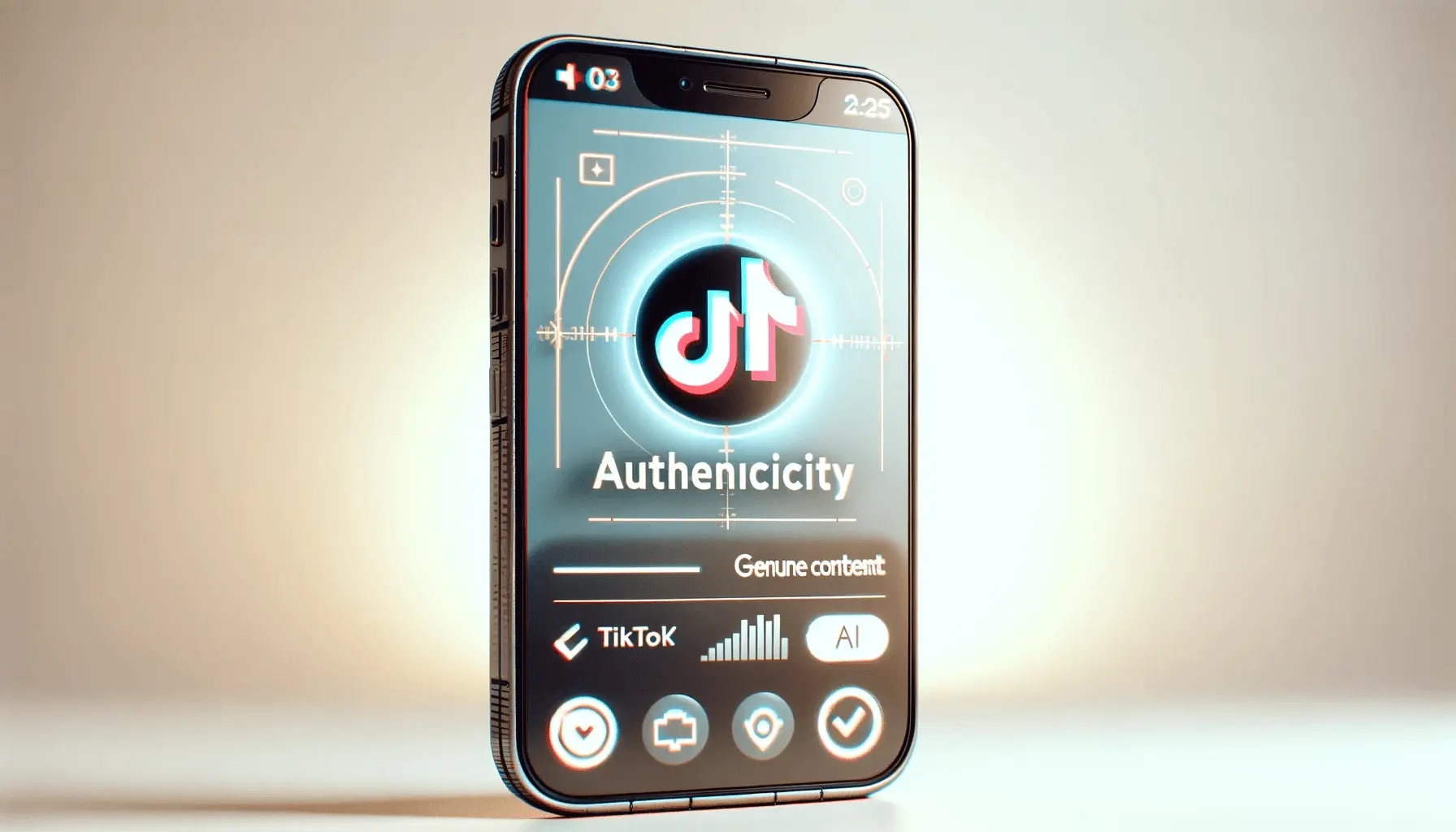In the ever-evolving landscape of content marketing, the emphasis on authenticity has never been more pronounced than it is heading into 2024.
As digital spaces become increasingly saturated with content, the quest for genuine connection and trust between brands and their audiences has taken center stage.
Authenticity, once a buzzword tossed around in marketing meetings, has now become the linchpin of successful content strategies.
This shift reflects a broader change in consumer expectations, where audiences are not just seeking products or services, but are in pursuit of real, relatable experiences that resonate with their values and aspirations.
The importance of authenticity in content marketing transcends mere trendiness.
It’s rooted in the fundamental need for human connection—a need that digital platforms can both bridge and widen.
In a world where consumers are bombarded with information and choices, authentic content offers a beacon of trust and reliability.
It’s not just about telling a story; it’s about telling your story truthfully, in a way that engages and inspires.
As we delve deeper into the significance of authenticity, it becomes clear that this is not just a strategy for content marketing but a mandate for brand survival and relevance in 2024 and beyond.
- The Pillars of Authentic Content Creation
- Embracing Authentic Narratives
- Authentic Content and Audience Engagement
- Leveraging Authenticity for Brand Loyalty
- Authenticity in the Age of Digital Transformation
- Innovating with Authenticity
- Authenticity and the Future of Content Marketing
- Embracing Authenticity: The Keystone of Future Content Marketing
- FAQs on Authenticity in Content Marketing
The Pillars of Authentic Content Creation
Understanding Your Audience
At the heart of authentic content lies a deep understanding of your audience.
Knowing who your audience is, what they care about, and how they engage with content is foundational.
This understanding goes beyond demographics and into the realm of empathy—putting yourself in your audience’s shoes to grasp their challenges, desires, and the nuances of their daily lives.
Authentic content speaks to these aspects directly, creating a connection that feels personal and genuine.
Engaging with your audience through social media, surveys, and direct interactions provides invaluable insights.
These interactions not only inform your content strategy but also build a community around your brand.
This community becomes a testament to your brand’s authenticity, as it reflects real people with shared interests and values.
Transparency and Vulnerability
Another cornerstone of authenticity is transparency.
In an age where consumers are increasingly skeptical of marketing tactics, being open about your brand’s processes, successes, and even failures can set you apart.
Vulnerability, when handled correctly, humanizes your brand.
It shows that behind the logo and the products, there are people striving to make a difference, facing challenges just like everyone else.
This approach does not mean oversharing or focusing on negatives.
Instead, it’s about honest storytelling that acknowledges the journey—both the highs and the lows.
Sharing behind-the-scenes glimpses of your operations, discussing the thought process behind new product launches, or addressing customer concerns openly are all practices that contribute to a perception of authenticity.
Authentic content creation is not just about what you say, but how you say it. It’s about crafting messages that resonate on a human level, fostering a sense of connection and trust.
Embracing Authentic Narratives
Creating authentic narratives is a strategic approach that involves weaving your brand’s values, mission, and vision into every piece of content you produce.
It’s about telling stories that not only highlight what you sell but also why you sell it and why it matters.
This narrative-driven content strategy goes beyond traditional marketing to connect with audiences on an emotional level, making your brand memorable and relatable.
Authentic narratives are built on the foundation of your brand’s unique identity and the real value it provides to customers.
They should reflect the core of what your brand stands for, incorporating elements of your brand’s history, its people, and its vision for the future.
Here’s how to effectively embrace and craft these narratives:
- Highlight Real Stories: Share customer testimonials, case studies, and stories of how your products or services have made a difference. Real stories from real people add a layer of credibility and relatability that can’t be achieved through generic content.
- Involve Your Team: Let your audience get to know the faces behind the brand. Featuring your team’s stories, experiences, and insights adds a personal touch and builds a stronger connection with your audience.
- Focus on Value: Every piece of content should offer value to your audience, whether it’s educational, inspirational, or entertaining. Content that provides value reinforces your brand’s relevance and authority in your industry.
- Be Consistent: Consistency in your messaging, tone, and values across all platforms reinforces your brand’s identity and helps build trust over time. Inconsistency can confuse your audience and dilute your brand’s authenticity.
Integrating Authenticity Across Channels
Authenticity should be a thread that runs through all your content marketing channels, from your website and blog to social media and email campaigns.
Each platform offers unique opportunities to showcase your brand’s authenticity and connect with your audience in different ways.
- Website and Blog: Use your website and blog to share in-depth stories, insights, and educational content that reflects your brand’s expertise and values.
- Social Media: Social media platforms are ideal for engaging directly with your audience, sharing behind-the-scenes content, and highlighting real-time stories and experiences.
- Email Marketing: Personalize your email campaigns to speak directly to your audience’s needs and interests, offering exclusive content that adds value and enhances their connection with your brand.
Incorporating authenticity across all channels requires a strategic approach that aligns with your overall brand strategy and audience preferences. Tailoring your message to fit the platform while maintaining a consistent brand voice is key to authentic engagement.
Authentic Content and Audience Engagement
Engaging your audience with authentic content is more than just a strategy; it’s a commitment to fostering genuine relationships with your followers, customers, and community.
In the digital age, where attention is a scarce commodity, capturing and maintaining this attention requires content that resonates on a personal level.
Authentic engagement is characterized by interactions that feel personal, meaningful, and tailored to the individual needs and interests of your audience.
To elevate audience engagement through authenticity, consider the following approaches:
- Interactive Content: Create polls, quizzes, and interactive videos that invite participation. Interactive content not only boosts engagement but also provides valuable insights into your audience’s preferences and behaviors.
- User-Generated Content (UGC): Encourage your audience to share their own stories, photos, and experiences with your brand. UGC not only amplifies authenticity but also builds community and trust among your audience.
- Responsive Communication: Be active in responding to comments, messages, and reviews. Personalized responses show that your brand values its audience and is committed to building relationships.
- Value-Driven Content: Continuously deliver content that educates, entertains, or inspires your audience. Content that adds value fosters loyalty and keeps your audience coming back for more.
Measuring Engagement and Authenticity
Measuring the impact of authenticity on audience engagement involves looking beyond traditional metrics like likes and shares.
It requires a deeper analysis of how your content is resonating with your audience and fostering genuine interactions.
Key metrics to consider include:
- Comment Quality: Look at the depth and relevance of the comments on your posts. High-quality, thoughtful comments indicate that your content is engaging and resonating with your audience.
- User-Generated Content: The volume and quality of UGC can be a powerful indicator of how connected and engaged your audience feels with your brand.
- Direct Messages and Emails: An increase in direct communications from your audience can signal a higher level of trust and interest in your brand.
- Engagement Rate: While traditional, the engagement rate (including likes, shares, and comments) still provides valuable insights into how well your content is performing.
Authentic engagement is not just about numbers; it’s about the quality of interactions and the depth of the connection your content creates with your audience.
Leveraging Authenticity for Brand Loyalty
Building brand loyalty in today’s competitive market requires more than just high-quality products or services; it demands a genuine connection with your audience.
Authenticity plays a crucial role in this process, serving as the foundation upon which trust and loyalty are built.
When customers believe in your brand’s authenticity, they’re more likely to become not just repeat buyers but also passionate advocates for your brand.
To leverage authenticity effectively for enhancing brand loyalty, consider these strategies:
- Consistent Value Alignment: Ensure that your brand’s actions, communications, and offerings consistently align with the values you profess. Discrepancies between what you say and what you do can erode trust quickly.
- Personalized Experiences: Use data and insights to personalize your interactions with customers. Personalization shows that you understand and value your customers’ unique needs and preferences.
- Community Building: Foster a sense of community among your customers through shared experiences, values, and goals. A strong community can amplify brand loyalty and encourage word-of-mouth marketing.
- Transparency: Be open about your business practices, challenges, and successes. Transparency fosters trust and shows that you have nothing to hide from your customers.
Cultivating Trust Through Authenticity
Trust is the cornerstone of brand loyalty, and authenticity is key to building that trust.
Customers are more savvy and skeptical than ever, and they can sense insincerity from a mile away.
By being authentic in your messaging, storytelling, and interactions, you signal to your customers that your brand is trustworthy and reliable.
Here are some ways to cultivate trust through authenticity:
- Authentic Storytelling: Share real stories about your brand, employees, and customers. Authentic storytelling can create emotional connections and humanize your brand.
- Admitting Mistakes: When things go wrong, own up to your mistakes and take clear steps to make things right. Customers respect and trust brands that are accountable for their actions.
- Customer-Centric Policies: Implement policies and practices that prioritize the well-being and satisfaction of your customers. This demonstrates that you value your customers beyond the transactions.
Authenticity isn’t just a marketing tactic; it’s a long-term strategy that can significantly impact your brand’s reputation, customer satisfaction, and ultimately, loyalty.
Authenticity in the Age of Digital Transformation
The digital transformation has reshaped how brands interact with their audiences, offering new platforms and technologies to connect in real-time.
However, this digital evolution also presents challenges in maintaining authenticity.
As brands navigate the vast digital landscape, the imperative to remain genuine in their interactions and content has intensified.
Authenticity in the digital age is not just about being true to your brand’s values; it’s about adapting those values to a changing online ecosystem without losing the essence of what makes your brand unique.
To thrive in this era, brands must embrace digital tools and platforms while ensuring their use enhances rather than detracts from their authenticity.
This involves:
- Choosing the Right Platforms: Not every social media platform or digital tool will align with your brand’s voice and audience. Select platforms that best fit your brand’s authentic message and where your audience is most active.
- Adapting Content for Digital: Tailor your content to suit the nuances of each digital platform while maintaining your brand’s core message. This adaptation should feel natural rather than forced, ensuring consistency in authenticity across all channels.
- Engaging Authentically: Use digital platforms to engage with your audience in meaningful ways. This includes responding to comments, participating in conversations, and sharing content that adds value to your audience’s digital experience.
Overcoming Digital Authenticity Challenges
The digital world is fraught with challenges that can make maintaining authenticity difficult.
From the impersonal nature of online interactions to the saturation of content, brands must work harder to cut through the noise and connect with their audience authentically.
Overcoming these challenges requires a strategic approach that prioritizes genuine engagement and leverages digital tools to enhance rather than replace real human connections.
Strategies for overcoming digital authenticity challenges include:
- Humanizing Your Digital Presence: Use technology to showcase the human elements of your brand. This can include behind-the-scenes content, live Q&A sessions, and storytelling that highlights your team and customers.
- Maintaining Transparency: Be open about how you use data, manage privacy, and make decisions. Transparency in the digital realm builds trust and reinforces your commitment to authenticity.
- Emphasizing Quality Over Quantity: In a digital world overflowing with content, quality and relevance trump volume. Focus on creating high-quality, authentic content that resonates with your audience and reflects your brand’s values.
In the digital age, authenticity becomes a beacon that guides customers to your brand amidst a sea of online content. By embracing digital transformation with a focus on genuine connections, brands can navigate the challenges and opportunities of the digital landscape with integrity and purpose.
Innovating with Authenticity
Innovation and authenticity may seem like opposing forces, with the former pushing boundaries and the latter grounding brands in their core values.
However, when harmonized, innovation can amplify a brand’s authenticity, offering fresh ways to engage audiences while staying true to the brand’s essence.
The key lies in leveraging innovation to enhance the brand’s narrative, making authenticity a part of the evolution rather than a casualty of change.
Brands that innovate with authenticity at the forefront understand that genuine innovation isn’t just about the latest technology or trend.
It’s about finding new ways to solve real problems for their audience, communicate their message, and enrich their community’s experience.
This approach ensures that innovation strengthens the brand’s connection with its audience, rather than diluting its message.
Strategies for Authentic Innovation
To innovate authentically, brands should focus on strategies that align with their core values and meet their audience’s needs.
This involves:
- Listening to Your Audience: Innovation starts with understanding the challenges, desires, and feedback of your audience. Use this insight to guide your innovation efforts, ensuring they add real value.
- Aligning with Brand Values: Any new product, service, or content should reflect your brand’s values. This alignment ensures that innovations feel like a natural extension of your brand, not a departure from it.
- Transparent Communication: Be open about the why behind your innovations. Sharing the purpose and process behind new initiatives can help your audience understand and embrace them.
- Community Involvement: Involve your community in the innovation process through beta testing, feedback sessions, or co-creation opportunities. This inclusion not only enhances the end product but also builds a deeper sense of community and loyalty.
Innovating with authenticity requires a delicate balance between embracing the new and honoring the brand’s heritage.
By focusing on meaningful innovation that resonates with both the brand and its audience, companies can navigate the future without losing sight of what made them successful in the first place.
Authentic innovation is not about reinventing the wheel for the sake of novelty. It’s about thoughtful evolution that respects the past while boldly stepping into the future, always with the audience’s needs and the brand’s essence at heart.
Authenticity and the Future of Content Marketing
As we look towards the future of content marketing, the role of authenticity becomes increasingly significant.
The digital landscape is evolving, with new platforms, technologies, and consumer behaviors emerging at a rapid pace.
In this ever-changing environment, maintaining authenticity is not just a strategy but a necessity for brands aiming to connect with their audience on a deeper level.
The future of content marketing will be shaped by brands that prioritize genuine connections, value-driven content, and transparent communication.
For brands to succeed in this authentic future, they must be willing to adapt, listen, and evolve while staying true to their core values.
This means embracing new technologies and platforms not as ends in themselves but as means to better serve and engage their audience.
It also means being proactive in addressing societal and environmental issues, contributing positively to the community, and building a brand that stands for something more than just its products or services.
Adapting to Changing Consumer Expectations
Consumer expectations are shifting, with a growing demand for brands to be more responsible, ethical, and transparent.
This shift presents both a challenge and an opportunity for content marketers.
To meet these expectations, brands must:
- Focus on Sustainability: Demonstrate a commitment to sustainable practices and share your journey towards sustainability with your audience.
- Embrace Social Responsibility: Take a stand on social issues relevant to your brand and audience. Authentic advocacy can strengthen your brand’s connection with its community.
- Enhance Transparency: Be open about your processes, challenges, and successes. Transparency fosters trust and reinforces your brand’s authenticity.
The future of content marketing is authentic, responsive, and community-focused.
By prioritizing authenticity in their strategies, brands can build lasting relationships with their audience, foster brand loyalty, and navigate the complexities of the digital age with integrity and purpose.
The brands that will thrive are those that recognize authenticity not as a trend but as the cornerstone of meaningful engagement and sustainable growth.
The future of content marketing lies in creating genuine connections, where authenticity is the bridge between brands and their audiences. Embracing this authentic approach will be key to navigating the challenges and opportunities of the digital landscape ahead.
Embracing Authenticity: The Keystone of Future Content Marketing
In the dynamic realm of content marketing, authenticity has emerged as the keystone, shaping the way brands interact with their audiences.
As we navigate through the complexities of digital transformation and evolving consumer expectations, the significance of authenticity in content marketing has never been more pronounced.
This comprehensive exploration underscores the pivotal role of authenticity, not merely as a marketing strategy but as the essence of brand identity and consumer engagement.
The Path Forward with Authenticity
Looking ahead, the trajectory of content marketing is unmistakably aligned with the principles of authenticity.
Brands that harness the power of genuine storytelling, transparent communication, and audience engagement are poised to thrive in the competitive digital landscape.
The future beckons for a strategic embrace of authenticity, where brands are expected to:
- Deepen their understanding of audience needs and preferences, tailoring content that resonates on a personal and emotional level.
- Commit to transparency and vulnerability, fostering trust and loyalty among consumers.
- Leverage digital platforms to enhance rather than dilute the authenticity of their messaging.
- Innovate with integrity, ensuring that new products, services, and content align with core values and brand identity.
- Adapt to changing consumer expectations, particularly around sustainability, social responsibility, and ethical practices.
As we venture into the future, the integration of authenticity into every facet of content marketing will not only differentiate brands but also cultivate a loyal and engaged community.
The essence of authenticity in content marketing transcends the transactional, fostering a deeper connection that enriches the consumer experience and elevates brand value.
Conclusion: Authenticity as the Heartbeat of Content Marketing
In conclusion, the journey towards an authentic future in content marketing is both a challenge and an opportunity for brands.
Authenticity, as the heartbeat of content marketing, demands a steadfast commitment to genuine interactions, ethical practices, and meaningful storytelling.
It is a strategic imperative that brands must embrace to navigate the complexities of the digital age successfully.
As we look to the future, it is clear that authenticity will remain the cornerstone of content marketing, guiding brands towards sustainable growth and deeper consumer connections.
The brands that will lead are those that recognize and act upon the undeniable truth that authenticity in content is not just desirable but essential.
Want your website to top Google search rankings? Leave the SEO to our professional agency!
FAQs on Authenticity in Content Marketing
Explore common questions about integrating authenticity into your content marketing strategy.
Authentic content marketing involves creating relatable, value-driven content that reflects your brand’s true values and connects deeply with your audience.
Authenticity builds trust and loyalty, distinguishing your brand in a crowded market by fostering genuine connections with your audience.
By being true to their values, engaging with their audience genuinely, and reflecting real stories and experiences in their content.
Yes, authentic content resonates more deeply with audiences, encouraging engagement through relatability and trust.
Authenticity fosters a sense of trust and community, making customers more likely to stay loyal and advocate for the brand.
Transparency reinforces authenticity by showing audiences the real people and values behind the brand, enhancing trust.
Digital tools and platforms can enhance authenticity by facilitating direct, meaningful interactions with audiences at scale.
Navigating the balance between innovation and staying true to core values is a key challenge in maintaining authenticity.











